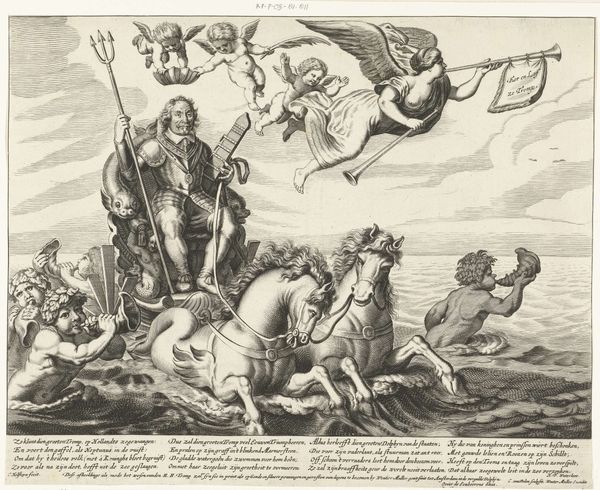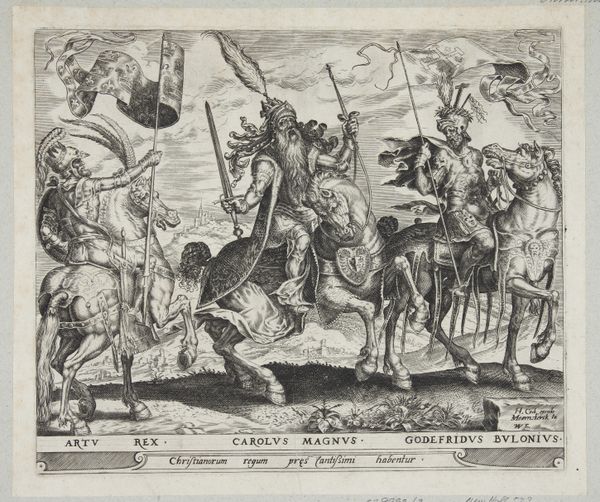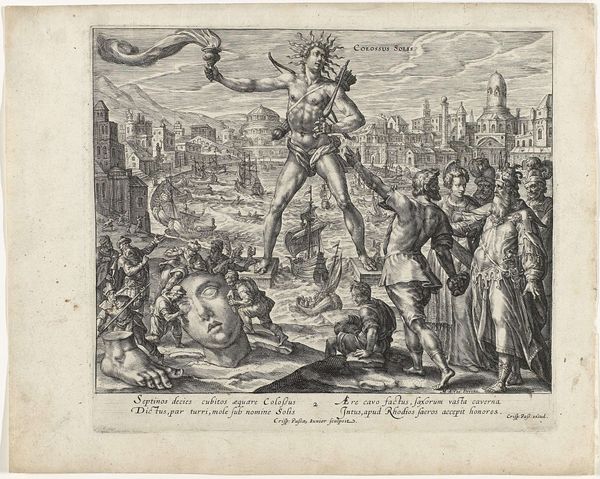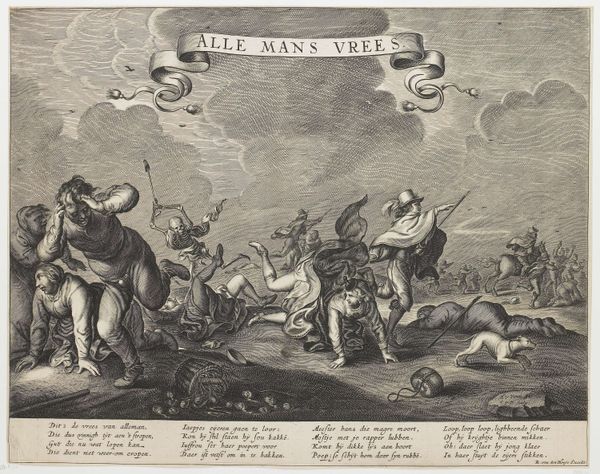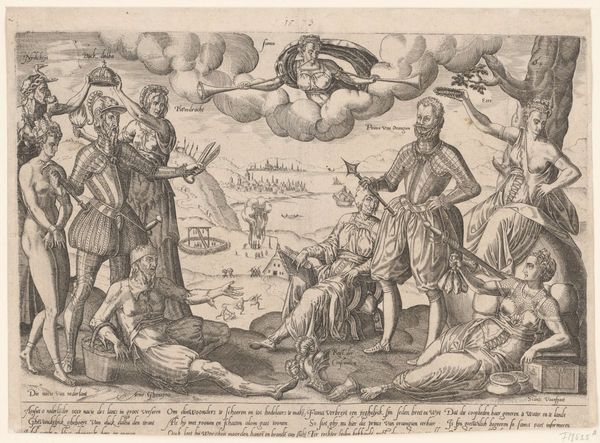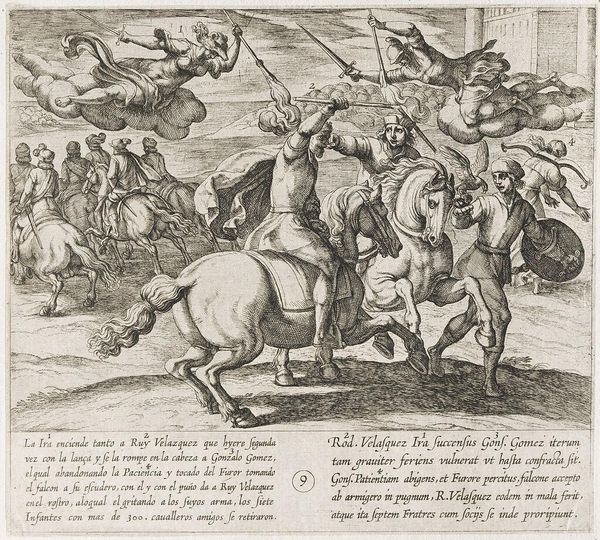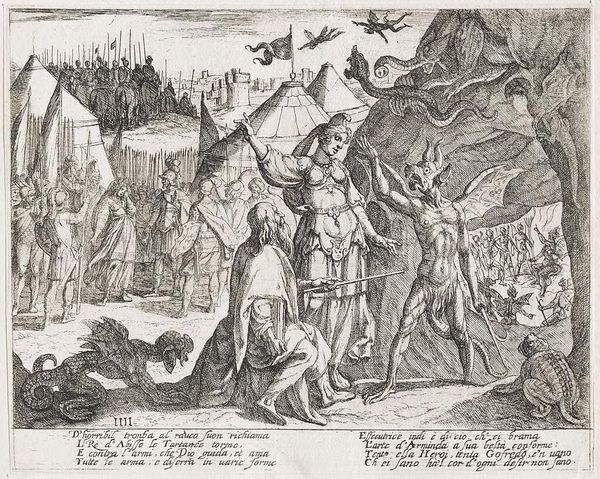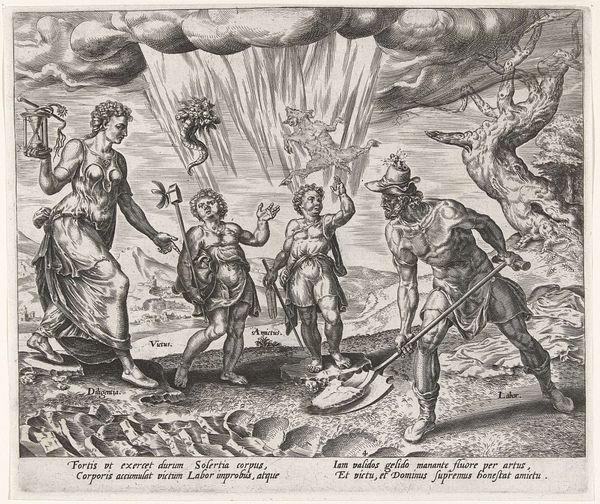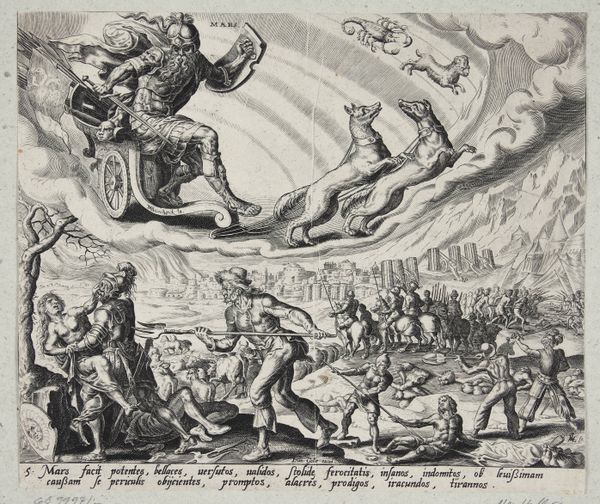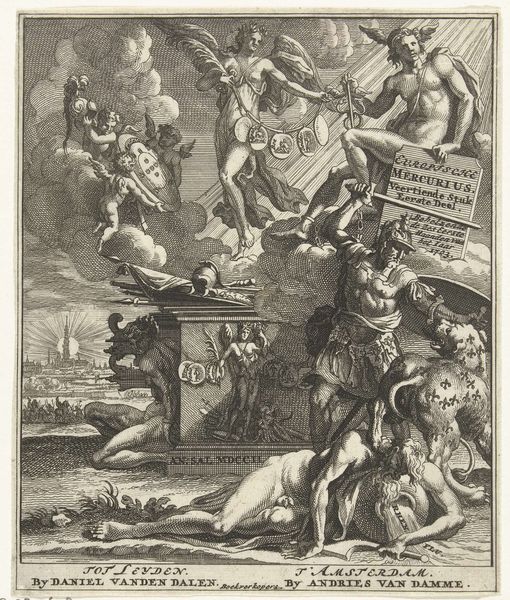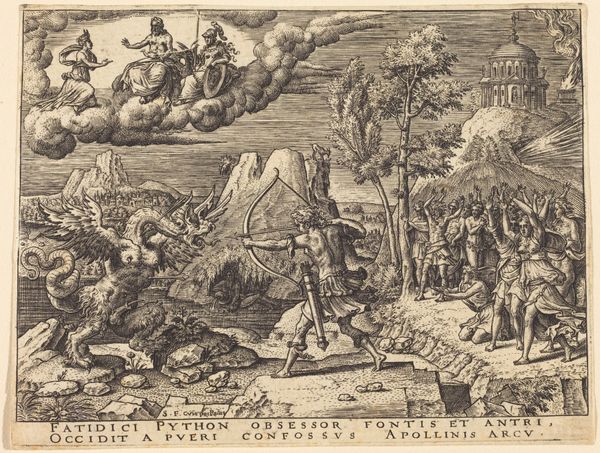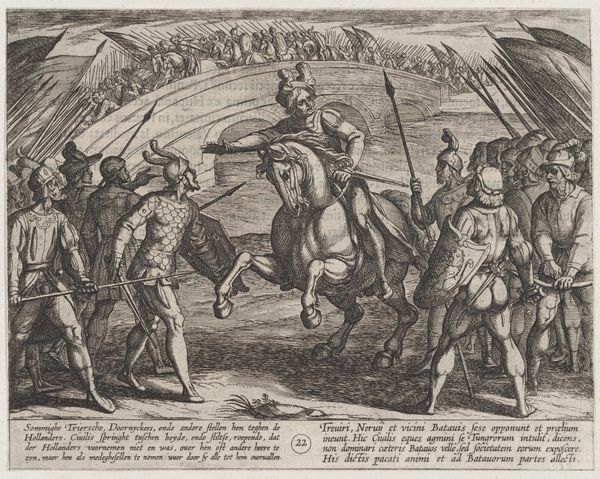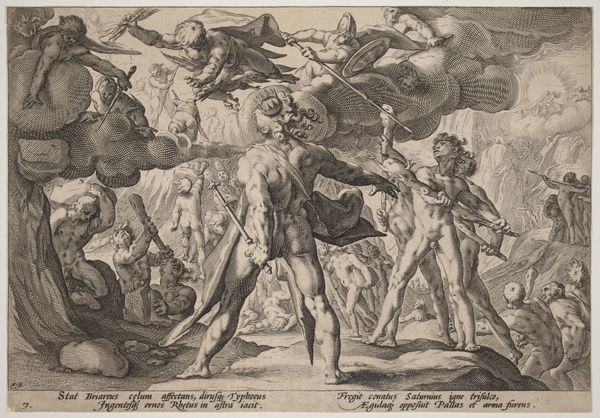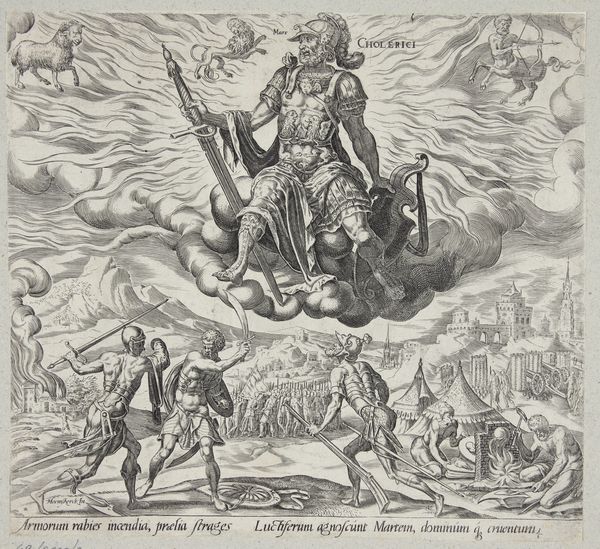
Allegorie op de overwinning van de baron van Wassenaer in de Slag in de Sont, 1658 1658
0:00
0:00
print, engraving
#
allegory
#
baroque
#
dutch-golden-age
# print
#
old engraving style
#
landscape
#
history-painting
#
engraving
Dimensions: height 246 mm, width 316 mm
Copyright: Rijks Museum: Open Domain
Curator: This print, made in 1658, commemorates the victory of Baron van Wassenaer in the Battle of the Sound. Its full title is "Allegorie op de overwinning van de baron van Wassenaer in de Slag in de Sont, 1658." Editor: It strikes me as incredibly elaborate! There's a dynamism in the arrangement, a strong contrast between light and shadow that contributes to a rather triumphant mood. Curator: Indeed. Consider how the print medium lends itself to disseminating specific ideologies and historical narratives. Here, the baron is literally deified, riding on a marine chariot. This visual language echoes classical allegory to legitimize Dutch naval power. Editor: Semiotically, the figure embodies triumph through his commanding posture and prominent placement, suggesting dominance over both the sea and his adversaries. What I notice also is how carefully balanced the composition is—the lower earthly portion against the airy celestial upper area. Curator: Right. And within the context of the Dutch Golden Age, the artwork serves to construct a specific national identity, inextricably linked to maritime strength and military achievement. The engraving highlights not just the baron’s victory, but Holland's rising power within Europe's theatre of conflict. The sea nymphs celebrating and angels bearing laurels aloft reinforce this propagandistic purpose, effectively celebrating the commander as some God of War, a status further augmented by that ever-present trident. Editor: Yes, the trident creates a clear symbolic connection. We might examine the texture achieved through line variation too; consider how those engraved lines function as units forming tone, depth and volume. Note too that detail where the Angel carries aloft not a mere flag, but depicts within the banner the historical engagement. Curator: Considering our contemporary viewpoint, we must address the nuances of power dynamics intrinsic to the historical context in relation to class, war, and identity formation during the Golden Age, asking whether such glorious works perpetuate colonial narratives and military dominance. Editor: Precisely. Analyzing the visual components shows it served propagandistic aims, the historical awareness reframes it from celebration into something worthy of more complex critique.
Comments
No comments
Be the first to comment and join the conversation on the ultimate creative platform.
